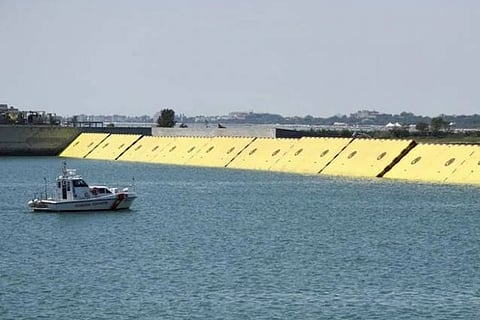

The multi-billion-euro Mose scheme - designed in 1984 but still incomplete a decade after it was due to come into service - has been plagued by corruption and cost overruns.
Prime Minister Giuseppe Conte attended the test and started the computerised system that sent all 78 giant yellow sluice gates rising simultaneously above the water for the first time.
“We are here for a test, not a parade,” Conte said, as crowds protesting against the giant cruise ships that normally disgorge thousands of sightseers daily were kept at a safe distance.
The coronavirus crisis has now brought such mass tourism to a temporary standstill.
Conte acknowledged the “disgraceful” corruption that had dogged the project, but said it was now time for everyone, including protesters, to look forwards.
“We all have to hope that it works,” he said.
The scheme - whose name is both a reference to the biblical prophet Moses and an acronym, in Italian, for “Experimental Electromechanical Module” - is not expected to be fully functional until next year.
The worst floods in more than 50 years left the historic St Mark’s Square submerged under a metre of water in November, underlining the growing environmental threat to one of the world’s most famous cultural sites.
Venice’s floods, “acqua alta” (high water) in Italian, are caused by a combination of factors exacerbated by climate change - from rising sea levels and unusually high tides to land subsidence that has caused the ground level of the city to sink.
Once operational, the Mose system is designed to protect Venice from tides of up to 3 metres, well beyond the current record, but some experts worry it will be overwhelmed by the sort of rising seas that recent climate-change models have predicted.
Visit news.dtnext.in to explore our interactive epaper!
Download the DT Next app for more exciting features!
Click here for iOS
Click here for Android